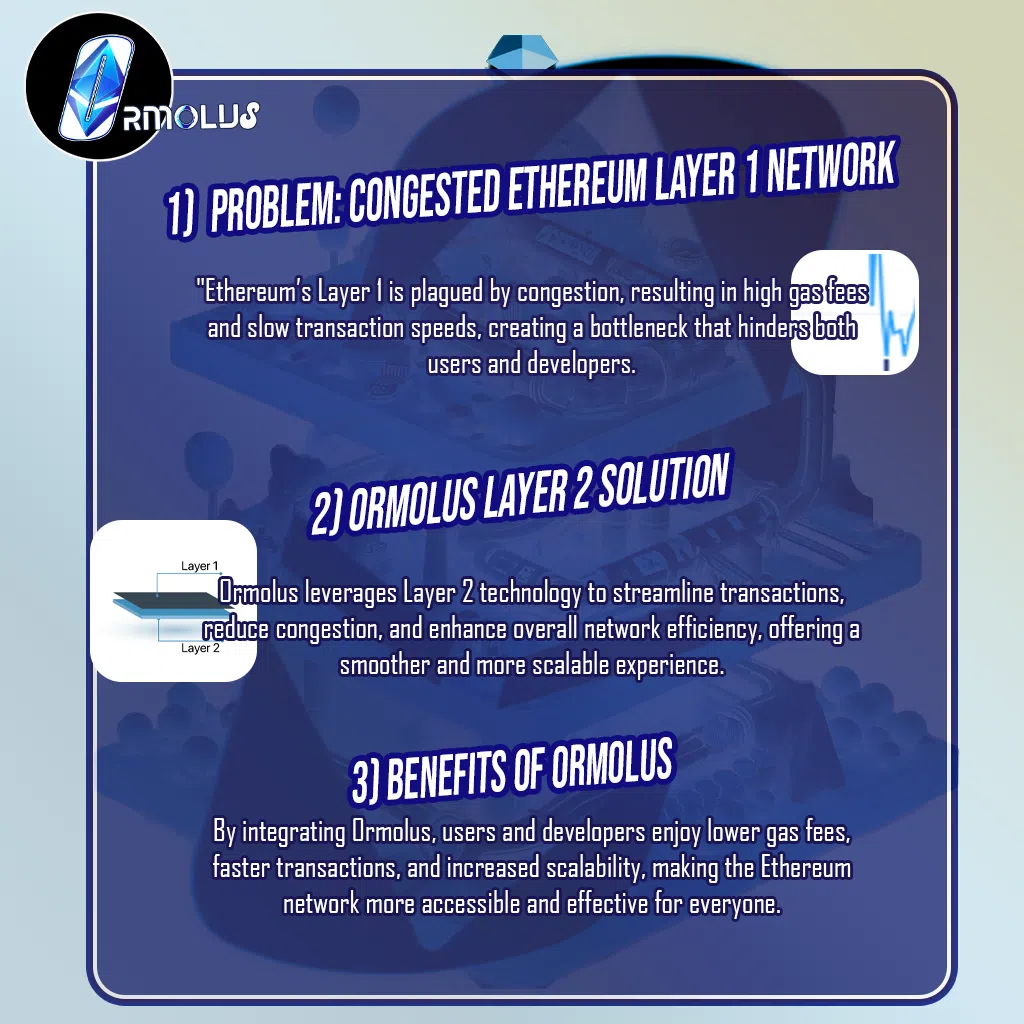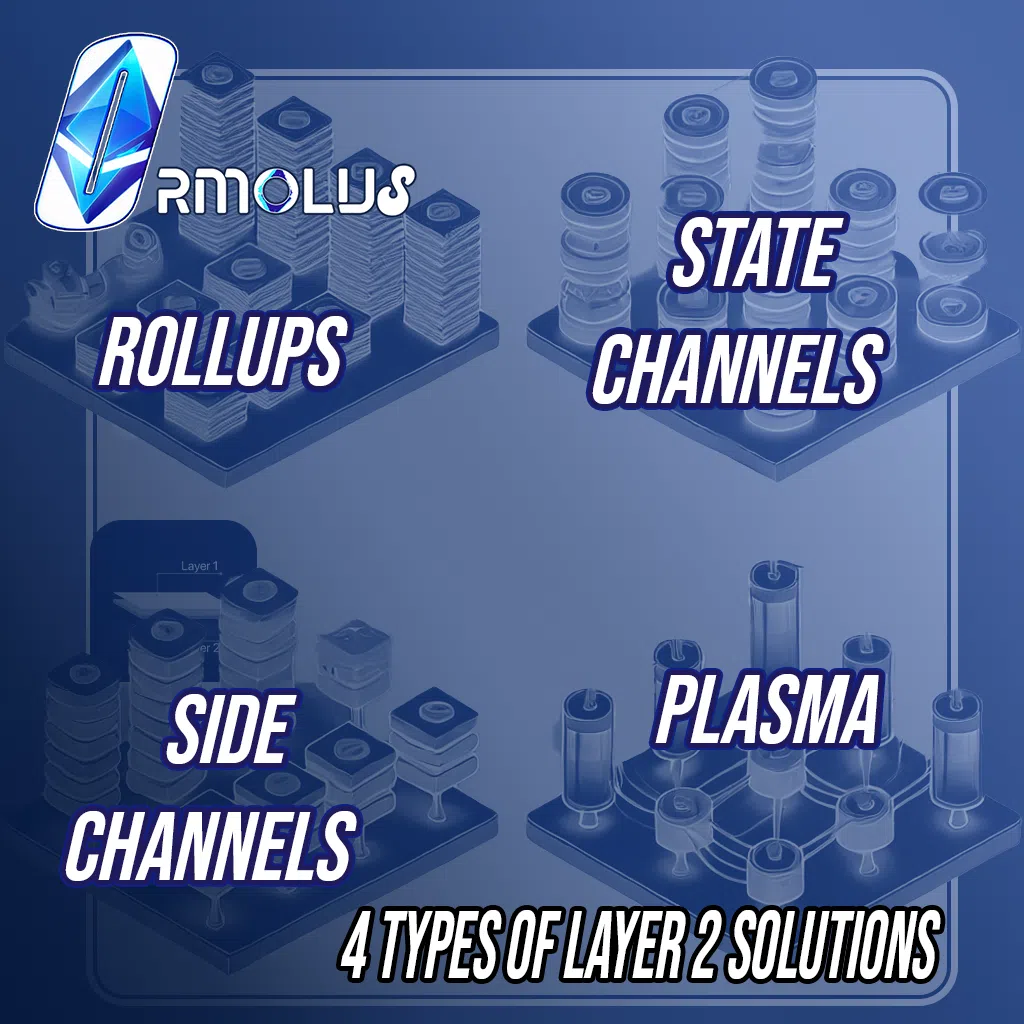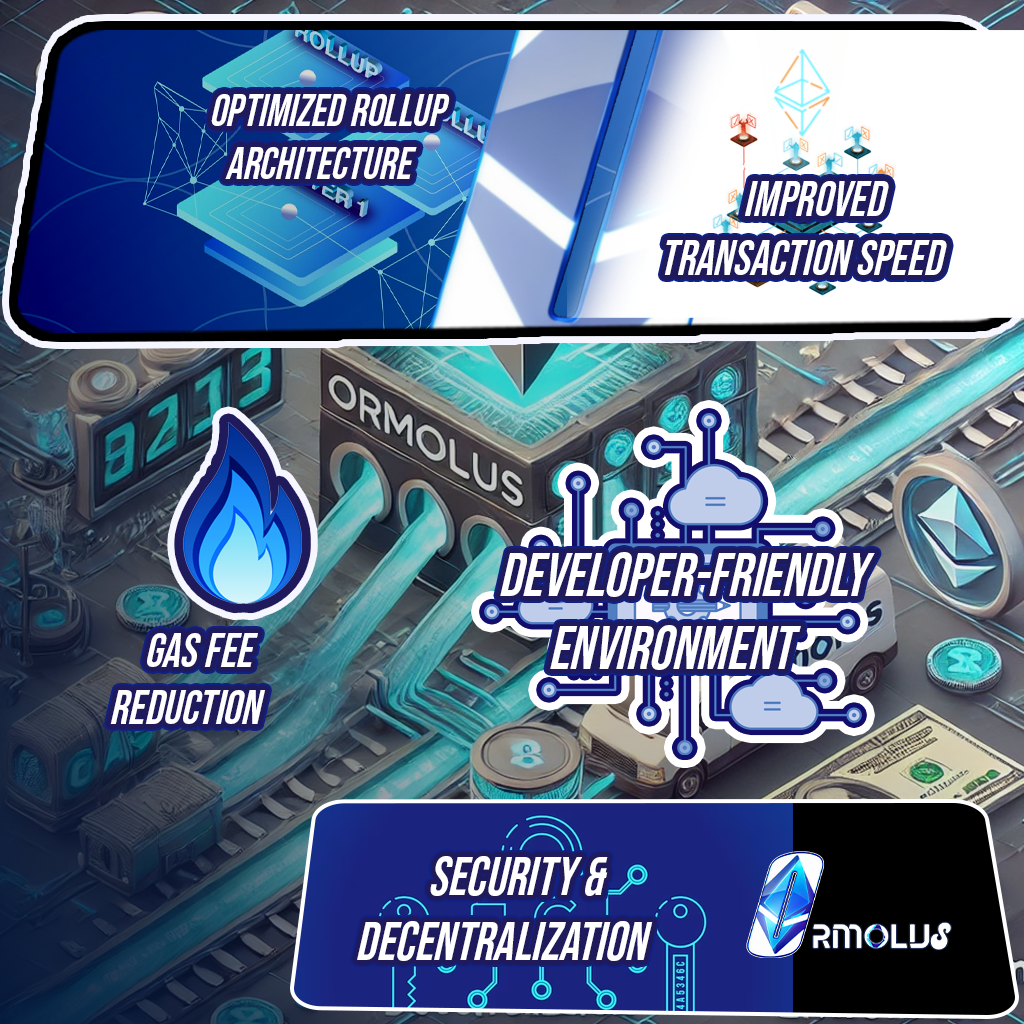Roadmap


In the fast-evolving world of blockchain technology, staking has become a cornerstone for many networks. However, as the industry matures, the limitations of traditional staking models are becoming more apparent. Enter Ormolus, a Layer 2 solution on the Ethereum blockchain that is not only addressing these limitations but is also introducing a groundbreaking rewards system that could change the game for good. In this detailed exploration, we’ll dive into why ETH rewards are superior to traditional staking models and how Ormolus is leading the charge in Layer 2 scalability and sustainability.

The Power of Layer 2: How Ormolus Is Pushing the Boundaries of Ethereum Scalability
As the Ethereum network continues to evolve, the need for scalability has become more pressing than ever. With the increasing popularity of decentralized applications (dApps), DeFi platforms, and NFTs, Ethereum’s Layer 1 has faced significant challenges, including high gas fees and slow transaction speeds. This is where Ormolus steps in, offering a revolutionary Layer 2 solution that not only addresses these challenges but also pushes the boundaries of what Ethereum can achieve. In this blog, we will explore how Ormolus enhances Ethereum’s scalability, reduces gas fees, and improves transaction speeds, making it an ideal platform for both developers and users.
Understanding Layer 2: What It Is and Why It Matters
Before delving into Ormolus’ specific implementation of Layer 2, it’s essential to understand what Layer 2 technology is and why it is so crucial for the future of blockchain networks like Ethereum.
What Is Layer 2?
In the simplest terms, Layer 2 refers to a secondary protocol that operates on top of an existing blockchain network, known as Layer 1. For Ethereum, Layer 1 is the base protocol that handles all transactions, smart contracts, and data storage. However, as more users and applications interact with Ethereum, the Layer 1 network becomes increasingly congested, leading to slower transaction times and higher gas fees.
Layer 2 solutions are designed to offload some of the processing from the Layer 1 network, enabling faster and more cost-effective transactions. By moving a significant portion of the transaction load off-chain, Layer 2 can dramatically increase the scalability of Ethereum without compromising its core principles of security and decentralization.
Types of Layer 2 Solutions
Layer 2 is not a one-size-fits-all technology; it encompasses a variety of approaches, each with its unique advantages and use cases. Here are some of the most common types of Layer 2 solutions:
Rollups
Rollups bundle or “roll up” multiple transactions into a single batch and submit them to the Ethereum mainnet as one transaction. Rollups can be further categorized into Optimistic Rollups and Zero-Knowledge Rollups (ZK-Rollups), each offering different trade-offs in terms of speed, security, and data availability.
State Channels
State channels allow participants to conduct multiple transactions off-chain while only submitting the final state to the Ethereum mainnet. This approach is highly efficient for repeated interactions, such as microtransactions in gaming or payment systems.
Plasma
Plasma is a framework that creates smaller blockchains, known as “child chains,” which run alongside the main Ethereum blockchain. These child chains handle most transactions, while the Ethereum mainnet is used for final settlement and dispute resolution.
Sidechains
Sidechains are independent blockchains that run in parallel to Ethereum, connected through a bridge. They offer high scalability but require their own security models, which can make them less secure than native Layer 2 solutions.
Why Layer 2 Matters
Layer 2 solutions are crucial for the long-term success of Ethereum because they address three of the most pressing challenges faced by the network:
Transaction Speed
On the Layer 1 network, transaction confirmation can take several minutes during peak times. Layer 2 significantly reduces this latency, providing near-instantaneous transaction confirmations.
Scalability
Ethereum’s current capacity is limited to about 15 transactions per second (TPS), which is insufficient for supporting large-scale dApps and DeFi platforms. Layer 2 can increase this capacity exponentially, enabling Ethereum to handle thousands of TPS.
Gas Fees
High gas fees have been a significant barrier to entry for many users and developers. Layer 2 reduces these fees by processing transactions off-chain, making Ethereum more accessible and cost-effective.
How Ormolus Leverages Layer 2 to Push Ethereum’s Boundaries
Ormolus is a next-generation platform that fully embraces Layer 2 technology to enhance Ethereum’s scalability, reduce gas fees, and improve transaction speed. By doing so, Ormolus not only addresses the limitations of Ethereum’s Layer 1 but also opens up new possibilities for developers and users.

Optimized Rollup Architecture: The Core of Ormolus
At the heart of Ormolus’ Layer 2 solution is an optimized rollup architecture. Rollups are widely regarded as one of the most effective approaches to Layer 2 scalability because they combine the best of both worlds: high throughput and Ethereum-level security.
How Rollups Work
Rollups aggregate multiple transactions off-chain and then submit them to the Ethereum mainnet in a compressed format. This significantly reduces the amount of data that needs to be processed on Layer 1, allowing for more transactions to be handled simultaneously. There are two main types of rollups:
Optimistic Rollups
Assume that all transactions are valid unless proven otherwise. If a fraudulent transaction is detected, it can be challenged and corrected on Layer 1. Optimistic Rollups are efficient but require a challenge period, which can introduce some latency.
ZK-Rollups
Use zero-knowledge proofs to verify the validity of transactions before they are submitted to Layer 1. ZK-Rollups offer faster finality but are more complex to implement.
Ormolus has chosen to implement ZK-Rollups due to their superior speed and security. With ZK-Rollups, Ormolus can process thousands of transactions per second, making it ideal for high-demand applications like decentralized exchanges (DEXs), gaming platforms, and NFT marketplaces.
Gas Fee Reduction: Making Ethereum Affordable Again
One of the most significant barriers to Ethereum’s mass adoption has been the high cost of gas fees. During periods of network congestion, gas fees can skyrocket, making simple transactions prohibitively expensive. This is especially problematic for smaller users and developers who cannot afford to pay exorbitant fees for basic interactions.
Ormolus addresses this issue head-on by leveraging its Layer 2 solution to reduce gas fees to a fraction of what they are on Layer 1. By processing transactions off-chain and only submitting the final state to Ethereum, Ormolus minimizes the demand on the Ethereum mainnet, resulting in substantially lower fees.
Real-World Impact
For developers, lower gas fees mean that their dApps become more accessible to a broader audience. For users, it means they can participate in DeFi, trade NFTs, or use other blockchain services without worrying about the cost of gas. This reduction in fees is not just a technical improvement; it’s a game-changer for the Ethereum ecosystem as a whole.
Improved Transaction Speed: Real-Time Blockchain Interactions
n addition to scalability and cost, transaction speed is a critical factor in the usability of blockchain networks. On Ethereum’s Layer 1, transaction confirmation times can vary from a few seconds to several minutes, depending on network congestion. For applications that require real-time interactions, such as gaming, financial services, or decentralized exchanges, this delay is unacceptable.
Ormolus solves this problem by processing transactions off-chain, where they can be confirmed almost instantly. With Ormolus, users can enjoy near-instantaneous transaction speeds, enabling seamless experiences across a wide range of applications.
Applications of Improved Speed:
Decentralized Exchanges (DEXs)
Instant trade confirmations are essential for a positive user experience and efficient trading.
Gaming
Real-time interactions are crucial for multiplayer games, where even a slight delay can impact gameplay.
DeFi Platforms
Rapid transaction speeds allow for more efficient lending, borrowing, and liquidity provision, enhancing the overall effectiveness of DeFi protocols.

Security and Decentralization: Maintaining Ethereum’s Core Principles
While scalability, cost, and speed are essential, they cannot come at the expense of security and decentralization. Ormolus understands this, which is why its Layer 2 solution is designed to maintain the same level of security as Ethereum’s Layer 1 while enhancing performance.
Security Mechanisms: All transactions processed on Ormolus are ultimately settled on the Ethereum mainnet, ensuring that they benefit from Ethereum’s robust security. Additionally, the use of ZK-Rollups ensures that only valid transactions are processed, minimizing the risk of fraud or manipulation.
Decentralization: Ormolus is fully compatible with Ethereum’s existing infrastructure, including smart contracts, wallets, and dApps. This compatibility ensures that developers can build on Ormolus without sacrificing the decentralization that makes Ethereum unique. Moreover, Ormolus supports decentralized governance, allowing the community to have a say in the platform’s future direction.
Developer-Friendly Environment: Building the Future on Ormolus
One of Ormolus’ core goals is to provide a developer-friendly environment that fosters innovation and growth. By offering a scalable, cost-effective, and secure platform, Ormolus empowers developers to build the next generation of decentralized applications.
Smart Contract Compatibility
Ormolus is fully compatible with Ethereum’s Solidity programming language, making it easy for developers to migrate existing projects or create new ones. Whether you’re building a DeFi protocol, a gaming platform, or an NFT marketplace, Ormolus provides the tools and infrastructure needed to succeed.
Scalable Infrastructure
With Ormolus, developers no longer need to worry about the limitations of Ethereum’s Layer 1. The platform’s scalable infrastructure ensures that your dApp can handle high volumes of transactions without compromising on performance or user experience.
Comprehensive Developer Tools
Ormolus offers a suite of developer tools, including SDKs, APIs, and documentation, to make building on the platform as seamless as possible. Additionally, Ormolus provides support for integrating Layer 2 solutions into existing projects, helping developers take full advantage of the platform’s capabilities.
The Future of Blockchain Development with Ormolus
As Ethereum continues to grow and evolve, the need for scalable, efficient, and secure solutions becomes increasingly critical. Layer 2 technology is the key to unlocking Ethereum’s full potential, and Ormolus is leading the way in this regard. By pushing the boundaries of Ethereum scalability, reducing gas fees, and improving transaction speeds, Ormolus is setting a new standard for blockchain development.
A Platform for Developers and Users Alike
Ormolus is not just a Layer 2 solution; it’s a platform for the future of blockchain innovation. Whether you’re a developer looking to build scalable dApps or a user seeking a faster, more affordable blockchain experience, Ormolus offers the tools, infrastructure, and ecosystem needed to succeed.
Conclusion
Ormolus represents the next step in the evolution of Ethereum. By leveraging cutting-edge Layer 2 technology, Ormolus addresses the core challenges of scalability, transaction speed, and gas fees, all while maintaining the security and decentralization that make Ethereum unique. As blockchain technology continues to advance, Ormolus is poised to play a pivotal role in shaping the future of decentralized applications and services.
If you’re ready to be part of this revolution, explore what Ormolus can do for you and your projects.
